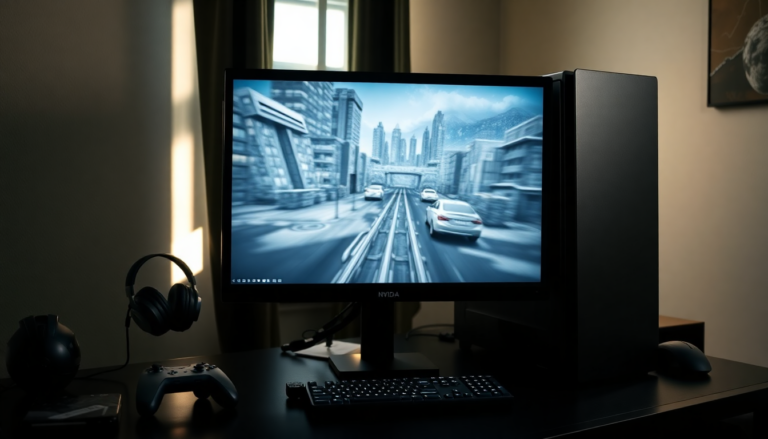Argomenti trattati
The GT 1030 may be a low-end graphics card, but it’s been gaining some buzz lately for its ability to harness FSR upscaling technology. However, let’s be honest: this GPU really struggles to deliver playable frame rates in today’s AAA games. In this article, we’ll explore the performance metrics of the GT 1030 across various titles, shedding light on its limitations and the role of upscaling features.
Performance Overview of the GT 1030
In the world of modern gaming, the GT 1030 is often seen as a starting point for budget-conscious gamers eager to dive into PC gaming. But how does it hold up against the heavyweights? Recent benchmarks tell a clear story: even with FSR upscaling, the GT 1030 has a hard time keeping pace.
When we look at popular titles like Kingdom Come: Deliverance II and Cyberpunk 2077, the GT 1030’s performance is far from impressive. At native 1080p resolution, it averaged a mere 8 FPS in Kingdom Come: Deliverance II, and even with FSR performance mode cranked up, it only managed to reach 15 FPS. Dropping the resolution to 720p didn’t make much of a difference either, as it barely hit 21 FPS—still below the threshold for enjoyable gameplay.
The situation was no better with Cyberpunk 2077, where the GT 1030 lagged at low settings, averaging just 12 FPS. Sure, FSR provided a slight boost to 21 FPS, but let’s be real: that’s still not enough for a smooth gaming experience. This pattern of disappointing performance raises an important question: is the GT 1030 really a viable gaming solution?
The Impact of FSR and Upscaling Technologies
FSR, or FidelityFX Super Resolution, aims to enhance gaming performance by rendering at lower resolutions while keeping visuals looking sharp. Unfortunately, the architecture of the GT 1030 limits how effective this technology can be. In tests conducted on Space Marine II, the card barely scraped by with an average of 6 FPS at native 1080p. Even with FSR performance mode activated, it only doubled its output to 13 FPS—still a far cry from what’s considered playable.
In fact, Alan Wake 2 highlighted the GT 1030’s shortcomings even further, where the performance was measured in seconds per frame instead of frames per second. It struggled so much that achieving a playable output was virtually impossible, even with upscaling technologies in use.
Interestingly, the GT 1030 did show a bit more promise with older titles like GTA V Enhanced, where it averaged around 30-40 FPS and even hit 50 FPS with FSR performance mode. This suggests that while the GT 1030 can benefit from upscaling, it’s much better suited for older games that were designed with less demanding hardware in mind.
Conclusion: Is the GT 1030 a Viable Choice for Gaming?
In summary, the GT 1030 serves as a reminder that not all graphics cards are created equal, especially in the realm of modern gaming. While it does leverage Nvidia’s Pascal architecture, enabling it to support upscaling technologies like FSR, its performance in contemporary AAA titles remains underwhelming.
If you’re on the hunt for a gaming experience that includes the latest high-demand titles, the GT 1030 might not be your best bet. It’s more of a budget-friendly option for less demanding games. For anyone looking to fully engage with the latest gaming experiences, investing in a more powerful graphics card is highly recommended. After all, the performance enhancements offered by upscaling features do little to disguise the fundamental limitations of the GT 1030, leaving it largely unprepared for the challenges of modern gaming.

